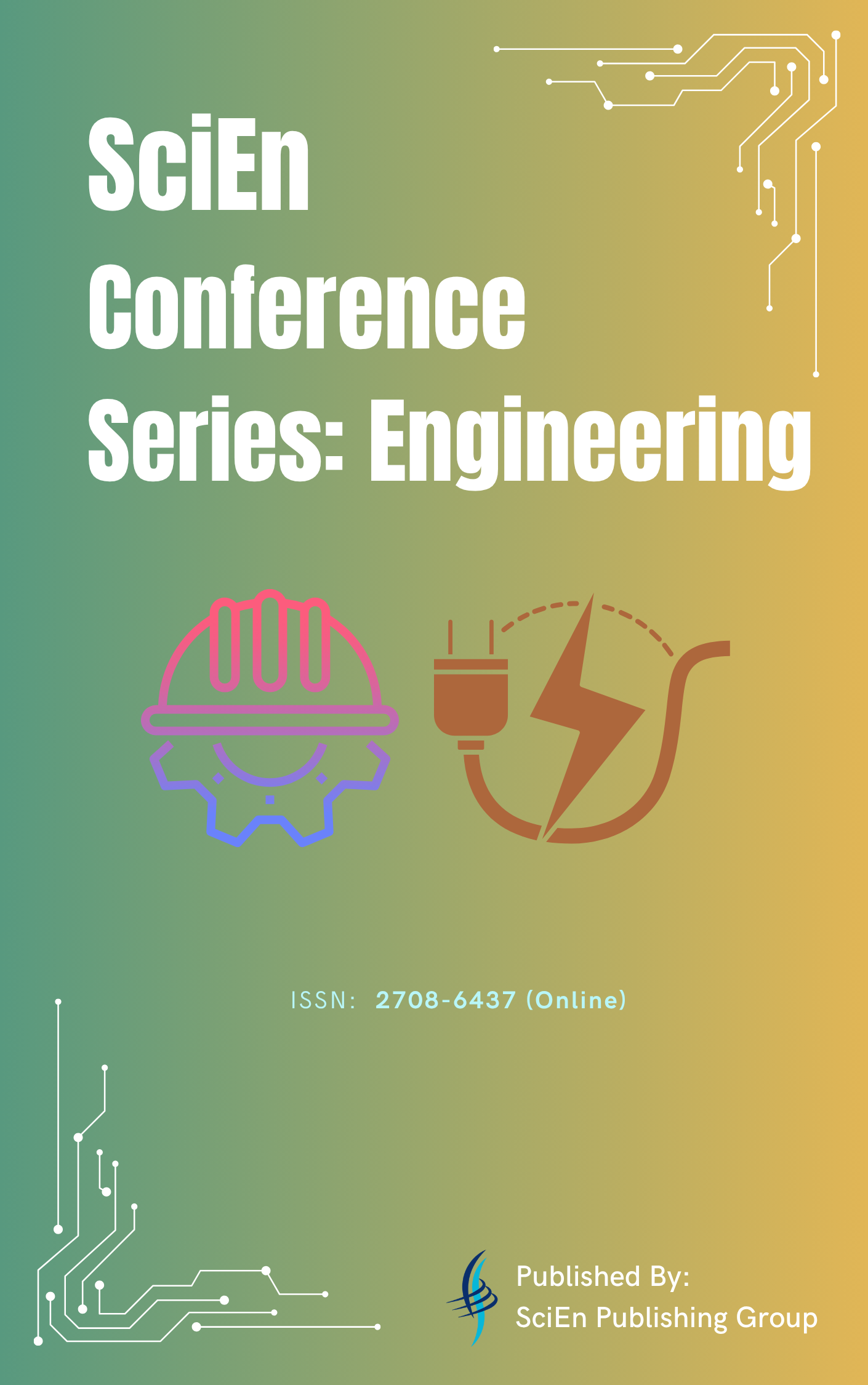Pneumonia Classification: Assessing the Impact of Fine-Tuning on Diagnostic Accuracy
DOI:
https://doi.org/10.38032/jea.2025.03.006Keywords:
Pneumonia, Chest X-ray, Fine-tuned, DenseNet, ResNet, Bangladeshi, Local datasetAbstract
Pneumonia is a major health problem, particularly in low and middle-income nations. Pneumonia continues to be a serious health concern, especially in areas with limited resources and diagnostic capabilities. With an emphasis on the efficacy of fine-tuning ResNet101, this study assesses the diagnostic performance of deep learning models for pneumonia classification using chest X-ray pictures. The RSNA public dataset was used to train the model, and a locally selected dataset from Bangladesh was used for testing. The adjusted ResNet101 had an overall accuracy of 84% and 89%, with an AUC of 0.86 and 0.67 on RSNA and local data respectively. In contrast, DenseNet121 shown problems with generalization as it declined to 77.6% accuracy (AUC = 0.59) on local data after achieving 95% accuracy (AUC = 0.99) on RSNA. This study also addresses the possibility of deploying diagnostic models via the web and on mobile devices in settings with limited resources. The study shows the viability and constraints of fine-tuned deep learning models for practical implementation in low-resource medical settings, despite the difficulties presented by small, unbalanced local datasets
References
[1] B. Dadonaite, “Pneumonia,” Our World in Data, 2018. [Online]. Available: https://ourworldindata.org/pneumonia
[2] Zar, H.J., Madhi, S.A., Aston, S.J. and Gordon, S.B., 2013. Pneumonia in low and middle income countries: progress and challenges. Thorax, 68(11), pp.1052-1056. DOI: https://doi.org/10.1136/thoraxjnl-2013-204247
[3] Walker, C.L.F., Rudan, I., Liu, L., Nair, H., Theodoratou, E., Bhutta, Z.A., O'Brien, K.L., Campbell, H. and Black, R.E., 2013. Global burden of childhood pneumonia and diarrhoea. The Lancet, 381(9875), pp.1405-1416. DOI: https://doi.org/10.1016/S0140-6736(13)60222-6
[4] Kallianos, K., Mongan, J., Antani, S., Henry, T., Taylor, A., Abuya, J. and Kohli, M., 2019. How far have we come? Artificial intelligence for chest radiograph interpretation. Clinical radiology, 74(5), pp.338-345. DOI: https://doi.org/10.1016/j.crad.2018.12.015
[5] Huang, G., Liu, Z., Van Der Maaten, L. and Weinberger, K.Q., 2017. Densely connected convolutional networks. In Proceedings of the IEEE conference on computer vision and pattern recognition (pp. 4700-4708). DOI: https://doi.org/10.1109/CVPR.2017.243
[6] Howard, A.G., Zhu, M., Chen, B., Kalenichenko, D., Wang, W., Weyand, T., Andreetto, M. and Adam, H., 2017. Mobilenets: Efficient convolutional neural networks for mobile vision applications. arXiv preprint arXiv:1704.04861.
[7] He, K., Zhang, X., Ren, S. and Sun, J., 2016. Deep residual learning for image recognition. In Proceedings of the IEEE conference on computer vision and pattern recognition (pp. 770-778). DOI: https://doi.org/10.1109/CVPR.2016.90
[8] Mohamed, C., Mwangi, R.W. and Kihoro, J.M., 2024. Enhancing Pneumonia Detection in Pediatric Chest X-Rays Using CGAN-Augmented Datasets and Lightweight Deep Transfer Learning Models. DOI: https://doi.org/10.4236/jdaip.2024.121001
[9] Reshan, M.S.A., Gill, K.S., Anand, V., Gupta, S., Alshahrani, H., Sulaiman, A. and Shaikh, A., 2023, May. Detection of pneumonia from chest X-ray images utilizing mobilenet model. In Healthcare (Vol. 11, No. 11, p. 1561). MDPI. DOI: https://doi.org/10.3390/healthcare11111561
[10] Kimeu, J.M., Kisangiri, M., Mbelwa, H. and Leo, J., 2024. Deep learning-based mobile application for the enhancement of pneumonia medical imaging analysis: A case-study of West-Meru Hospital. Informatics in Medicine Unlocked, 50, p.101582. DOI: https://doi.org/10.1016/j.imu.2024.101582
[11] Abubeker, K.M. and Baskar, S., 2023. B2-Net: an artificial intelligence powered machine learning framework for the classification of pneumonia in chest x-ray images. Machine Learning: Science and Technology, 4(1), p.015036. DOI: https://doi.org/10.1088/2632-2153/acc30f
[12] Sousa, R.T., Marques, O., Soares, F.A.A., Sene Jr, I.I., de Oliveira, L.L. and Spoto, E.S., 2013. Comparative performance analysis of machine learning classifiers in detection of childhood pneumonia using chest radiographs. Procedia Computer Science, 18, pp.2579-2582. DOI: https://doi.org/10.1016/j.procs.2013.05.444
[13] Sakib, S.N., Masud, R., Rubaiat, S.Y., Bepery, C., Sarker, M. and Hasan, M.K., 2021, September. Pneumonia detection using deep transfer learning in gender specific chest x-ray images. In 2021 International Conference on Electronics, Communications and Information Technology (ICECIT) (pp. 1-4). IEEE. DOI: https://doi.org/10.1109/ICECIT54077.2021.9641281
[14] Maquen-Niño, G.L.E., Nuñez-Fernandez, J.G., Taquila-Calderon, F.Y., Adrianzén-Olano, I., De-La-Cruz-VdV, P. and Carrión-Barco, G., 2024. Classification Model Using Transfer Learning for the Detection of Pneumonia in Chest X-Ray Images. International Journal of Online & Biomedical Engineering, 20(5). DOI: https://doi.org/10.3991/ijoe.v20i05.45277
[15] Bahaj, M., 2023, December. Pneumonia classification and localization in enhanced X-ray Images with transfer learning and CNN architectures. In 2023 7th IEEE congress on information science and technology (CiSt) (pp. 239-244). IEEE. DOI: https://doi.org/10.1109/CiSt56084.2023.10409997
Downloads
Published
Data Availability Statement
The data will be made available upon reasonable request.
Issue
Section
License
Copyright (c) 2025 Md. Abid Ahammed, Chinmay Bepery, Md. Mahbubur Rahman, Raihan Masud, Md Atikqur Rahaman, Md. Moshiur Rahman

This work is licensed under a Creative Commons Attribution-NonCommercial 4.0 International License.
All the articles published by this journal are licensed under a Creative Commons Attribution-NonCommercial 4.0 International License

